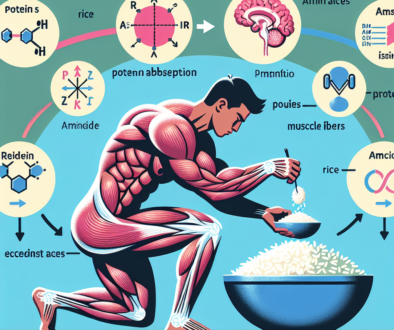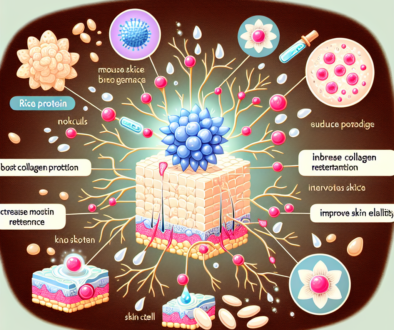Dispersive Solid-Phase Extraction Purification-Gas Chromatography Method For Determination Of Four Pesticide Residues In Rice
Analytical method for detecting four pesticides in rice using dispersive solid-phase extraction and gas chromatography, highlighting simplicity, speed, and accuracy.
Objective To establish a dispersive solid-phase extraction-gas chromatography method for the simultaneous determination of four pesticide residues: butachlor, buprofezinone, oridimethrin and deltamethrin in rice. Method: The sample was extracted with acetonitrile, and after salting out, the extract was purified with N-propyl-ethylenediamine silane (PSA) and octadecyl silica gel (C18) dispersion solid phase extraction materials before being put on the machine. Determination. The optimized chromatographic conditions are: DB-17 (30 m¡Á0.25 mm, 0.25 ¦Ìm) quartz capillary column, using programmed temperature separation, flow rate of 1.0 mL/min, injection volume of 1.00 ¦ÌL, and electron capture detector detection. Results: The linearity of the four pesticides was good in the range of 0.001~8 ¦Ìg/mL, the correlation coefficients (r) were all greater than 0.999, the limit of quantification was 0.001~0.08 mg/kg, and the average recovery rate of the four pesticides was 89.6%~102.9%, which was relatively standard. The deviation (RSD) is between 2.11%~7.81% (n=6). Conclusion: This method is simple, fast and accurate, and is suitable for trace analysis of four pesticide residues in rice.
The development and validation of reliable analytical methods for detecting pesticide residues in food products are critical to ensuring food safety and public health. This study presents a robust analytical technique, combining dispersive solid-phase extraction (dSPE) with gas chromatography (GC), designed for the simultaneous determination of four pesticide residues— butachlor, buprofezinone, oridimethrin, and deltamethrin— in rice samples.
Objective
The primary aim of this study is to establish a method that efficiently isolates and quantifies the aforementioned pesticide residues in rice. The significance of detecting these specific pesticides stems from their widespread use in agriculture and the potential health risks associated with their consumption.
Methodology
The analytical procedure begins with the extraction of pesticides from rice samples using acetonitrile as the solvent. Following extraction, a salting-out step is employed to enhance the separation of the analytes from the aqueous phase. The extract is then subjected to a purification process using a combination of N-propyl-ethylenediamine silane (PSA) and octadecyl silica gel (C18) as dSPE materials. This step is crucial for removing matrix components that may interfere with the GC analysis.
The chromatographic analysis is performed on a DB-17 quartz capillary column (30 m x 0.25 mm, 0.25 µm) using a programmed temperature separation technique. The flow rate is maintained at 1.0 mL/min, with an injection volume of 1.00 µL, and detection is carried out using an electron capture detector (ECD).
Results
The method demonstrated excellent linearity for all four pesticides over a concentration range of 0.001 to 8 µg/mL, with correlation coefficients (r) exceeding 0.999. The limits of quantification (LOQ) ranged from 0.001 to 0.08 mg/kg, which is indicative of the method’s high sensitivity. The average recovery rates for the pesticides varied from 89.6% to 102.9%, confirming the method’s accuracy. The relative standard deviation (RSD) values, reflecting the precision of the method, were found to be between 2.11% and 7.81% for six replicates.
Conclusion
The dSPE-GC method described in this study is a significant advancement in the analytical detection of pesticide residues in rice. Its simplicity, speed, and accuracy make it an excellent choice for trace analysis of these compounds. Furthermore, the method’s high recovery rates and low quantification limits ensure its suitability for monitoring the safety of rice, thus contributing to the protection of public health against the adverse effects of pesticide residues. This study not only demonstrates the feasibility of the dSPE-GC technique for analyzing pesticide residues in food but also underscores the importance of developing sensitive, reliable, and efficient methods for food safety testing.
For futher details of this article and research, feel free to contact our team for assistance.
About ETprotein:
ETprotein, a reputable plant protein vegan protein Chinese factory manufacturer and supplier, is renowned for producing, stocking, exporting, and delivering the highest quality organic bulk vegan protein and plant proteins. They include Organic rice protein, clear rice protein, pea protein, clear pea protein, oat protein, watermelon seed protein, pumpkin seed protein, sunflower seed protein, mung bean protein, peanut protein, various of plant peptides etc. Their offerings, characterized by a neutral taste, non-GMO, allergen-free attributes, cater to a diverse range of industries. They serve nutraceutical, pharmaceutical, cosmeceutical, veterinary, as well as food and beverage finished product distributors, traders, and manufacturers across Europe, USA, Canada, Australia, Thailand, Japan, Korea, Brazil, and Chile, among others.
ETprotein specialization includes exporting and delivering tailor-made protein powder and finished nutritional supplements. Their extensive product range covers sectors like Food and Beverage, Sports Nutrition, Weight Management, Dietary Supplements, Health and Wellness Products, and Infant Formula, ensuring comprehensive solutions to meet all your protein needs.
As a trusted company by leading global food and beverage brands and Fortune 500 companies, ETprotein reinforces China’s reputation in the global arena. For more information or to get a free sample of their protein products, please contact them and email sales(at)ETprotein.com today.














